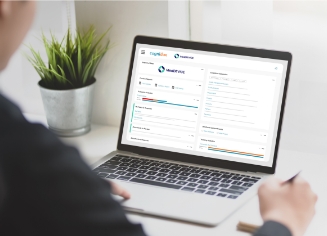 Supplier Quality Management (SQM) is critical for ISO 9001, ISO 13485, and FDA compliance—but many organisations still rely on informal, inconsistent supplier reviews. In this article, Cognidox quality consultant Tom Gaskell shares a 4-step framework for building a scalable, auditable Supplier Quality Management System that helps you reduce risk, drive improvement, and support regulatory goals.
Supplier Quality Management (SQM) is critical for ISO 9001, ISO 13485, and FDA compliance—but many organisations still rely on informal, inconsistent supplier reviews. In this article, Cognidox quality consultant Tom Gaskell shares a 4-step framework for building a scalable, auditable Supplier Quality Management System that helps you reduce risk, drive improvement, and support regulatory goals.
What Is Supplier Quality Management (SQM)?
Supplier quality management is the process you put in place to routinely assess and support your key suppliers as they deliver the products and services your business relies on to function.
An effective SQMS includes a repeatable supplier review checklist and digital scorecard to benchmark supplier performance against key metrics like quality, capacity, and risk
Why is supplier quality management important for compliance and growth?
Regular supplier assessment is key to keeping control over the quality levers that can help you;
- Gain standards (such as ISO 9001 and ISO 13485)
- Ensure regulatory compliance
- Drive commercial success
- Protect profitability
Why do businesses struggle with supplier management?Common Supplier Management Pitfalls
We’re all human. Without a repeatable system for managing and measuring supplier quality, it’s easy to become biased and inconsistent in the way we assess the performance of the companies we deal with every day. It's even more difficult to prove to regulators that we're tracking and controlling quality across the supply chain in the way they require.
So, how can you improve your supplier quality management?
Luckily, help is at hand. Tom Gaskell, our resident quality consultant at Cognidox recommends 4 key steps that you can take to build a more effective supplier QMS.
4 Steps to Build a Compliant Supplier Quality Management System
1 - Segment your suppliers
“The first thing you should do,” says Tom, “is to segment your suppliers. This will show you where you should be concentrating your time and effort”
Not all suppliers will have equal importance to the quality of your end product and the future of your business, so they won’t all need the same treatment. Break them down according to the levels of risk, cost and importance they represent for your business.
According to Tom, there are typically 4 types of supplier relationship which a business needs to manage:
- Key suppliers
- Non-critical suppliers
- Trusted Suppliers
- Everyone else
What are the 4 different types of suppliers on your roster?
1. Key suppliers
These supplier relationships are the lifeblood of your operations. Without these suppliers’ products and services, you don’t really have a business. If, for some reason, they are unable to continue supplying you, if their terms and conditions change drastically, or the quality of their output nose-dives - then you may be in serious trouble.
2. Non-critical suppliers
These suppliers are important to you but they are not key suppliers. It will be an annoyance and inconvenience if they can no longer supply you, but it will not be an active threat to your business if the worst happens.
3. Trusted suppliers
These are the long-standing suppliers that you rely on and trust implicitly. You are likely to have worked with them for years and developed a deep understanding of the way each other work. You might not want or need formal management processes and tools to oversee these relationships.
4. Everyone else
These provider relationships tend to be more commodified. They even go down to hand wash, coffee, or toilet roll suppliers. These specific companies are not integral to the way you do things; it would be easy to switch providers if you need to.
As Tom says:
“Most businesses will have 3 or 4 key suppliers and usually no more than 10. But these are the key suppliers without whom you’d really struggle to run your business. And so they need to be treated with extra care.”
That’s not to say there can’t be movement between the four categories, non-critical suppliers can become key suppliers. Key suppliers can become trusted suppliers over time. The list is dynamic and should be regularly reviewed.
But the key suppliers are those for whom you need a structured quality management system to ensure you’re getting the most out of the relationship, maximising the quality of their output and controlling the risk of failures in supply.
2 - Appoint key supplier managers
Tom recommends that your business allocates a named manager for each of these key suppliers accounts to ensure they get the information, attention, and support they need—and you get the quality products and services you require. These key supplier managers should be senior managers within your organisation. They should host regular calls, meetings, and performance reviews so the client knows if they’re meeting expectations and, if not, what they need to improve:
“Supplier relationships need to be nurtured on both sides to be successful. Suppliers need to be looking after you, but you also need to be looking after them. The account manager should use meetings with the supplier to share plans and let suppliers know your likely future needs. This will help them plan their resources and work out what you're going to need from them in the next few months and in the years to come.”
3 - Create a digital scorecard
As well as these regular meetings, you’ll need to find the right tools to track and measure supplier performance.
Tom suggests that you complete and maintain a scoresheet for every one of your key suppliers.
This scoresheet should be completed by the people in the business who regularly deal with the supplier and can bring their individual perspectives to bear on their performance.
“I use a supplier questionnaire form.” says Tom “It’s a simple Excel sheet, but it poses a number of questions about the supplier covering three key areas and allowing you to ‘score them’ on each. These three areas are: Capability, Capacity, and Quality."
The questions can be changed for each sector and supplier type so that you can benchmark their specific capabilities and performance against other existing and potential service providers.
As you go through the spreadsheet, the team agrees on a percentage score as an answer for each question (these are weighted appropriately for overall importance). But, the ‘final score’ is not revealed until the end.
And this is where the particular strength of the scorecard approach lies. It takes your answers and plays them back, but stripped of the caveats and justifications you may have given at the time of scoring. And the results may well surprise you.
You may really like a specific supplier, but their performance scores may be indicating cause for concern, and rival suppliers may be beating them based on the same metrics.
The scorecard is a tool for you to put aside your prejudices and biases. It’s a way for you to consider the real value the supplier is bringing to your business:
“The scorecard presents your view of the supplier in a way that's unfamiliar and comparative. Looking at these results can make you rethink your scoring or rethink your initial evaluation of them in a very useful way.”
But the scorecard is not intended to be used as a definitive, decision-making tool. Instead, it’s supposed to be a way of provoking thought and internal debate around the supplier and what they offer, encouraging you to justify your view of them against an aggregate quality score.
Tom recommends you fill out the scorecard at least annually, but the more often you go through the exercise the more you can see the way supplier performance is trending over time.
“Over time you can start seeing patterns and early warning signs for quality issues that you may not have noticed in the usual run of things”
The scorecard, then, becomes a tool for supplier managers to inform their decision-making, to alert both sides to potential issues; to spark important conversations with supplier partners, and to report upward to their managers about the performance of these critical partnerships.
Want to see the scorecard and explore its potential for yourself? You can download Tom's customisable Excel Sheet here.
4 - Integrate and Automate
Making regular supplier review part of the ‘way you do things’ can be a major challenge for a scaling business. When documents are stored in Google Docs and there are long gaps between internal reviews, it’s easy to lose documentation, overwrite previous versions and lose track of actions and feedback. But it’s much easier to achieve with the tools of a modern eQMS (electronic Quality Management System). With tools like these, you can:
- Set up work flows to trigger periodic reviews with your suppliers
- Remind you when reviews are coming up or overdue
- Centralise your scorecards and supplier documentation storage, so everyone always has access to the latest version
- Securely share results of supplier assessments formally with your team and your managers
Meeting ISO 9001 and ISO 13485 requirements
Formalising assessments like this can also help you meet the requirements of ISO 9001 and ISO 13485. While you have no regulatory obligation to audit your suppliers in ISO 9001, 7.4.1 does specify that you need a way of evaluating and selecting suppliers based on their ability to meet your requirements.
ISO 13485:2016 and the FDA require medical device developers to be able to evaluate the quality of the services they procure from third parties. As the FDA puts it:
“Each manufacturer shall establish and maintain the requirements, including quality requirements, that must be met by suppliers, contractors, and consultants.”
A managed process supported by a scorecard system can help you do just this - generating an auditable record available to prove you are doing so.
Conclusion
Unmanaged supplier relationships can end up in a mess of miscommunication, mistrust. and misunderstanding. Over time, they can lead to serious lapses in quality that can affect revenue, reputation, and even the future of your business.
A successful supplier QMS recognises the importance of developing, nurturing and supportive relationships with the suppliers you depend on most to meet your quality goals.
It gives your team the tools to routinely and objectively assess their performance, so you can make the hard decisions you need to, based on impartial evidence and benchmarking.
As we’ve seen, not every supplier on your roster needs this kind of focused quality management system, but for the critical few, it can repay the energy and resources you invest in creating one.
Making supplier management decisions with the help of a trusted scorecard system that’s adapted to fit your specific business needs, is a powerful way to help formalise your process.
Last updated on 14 April 2025





%20(1).webp?width=133&height=76&name=ISO%20IEC%2027001%20(1)%20(1).webp)